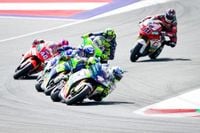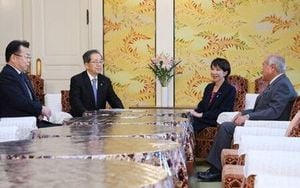The curtain is set to fall—at least for now—on one of MotoGP’s boldest recent experiments. The all-electric MotoE series, launched in 2019 to much fanfare as the sport’s answer to sustainable, high-performance racing, will be suspended at the end of the 2025 season. The announcement landed on September 11, 2025, ahead of the penultimate round at Misano, sending ripples through the paddock and the wider motorcycle racing community. For fans and insiders alike, the news marks the close of a chapter defined by innovation, adversity, and, ultimately, a tough market reality.
MotoE’s journey began with high hopes. As the official electric support class for MotoGP weekends, it was meant to showcase the future of two-wheeled racing technology. The series even survived a dramatic pre-inaugural setback: a devastating fire at the Jerez test that destroyed all bikes before a single race had been run. Italian firm Energica stepped up as the initial bike supplier, shepherding the series through its formative years until Ducati took over in 2023—the same season MotoE was elevated to world championship status. Yet, despite these milestones, the electric championship never quite captured the imagination of the MotoGP fanbase.
The decision to hit pause on MotoE was jointly announced by MotoGP organiser Dorna and motorcycle racing’s governing body, the FIM. FIM President Jorge Viegas addressed the situation candidly: “Today we announce the suspension of the FIM MotoE World Championship as from the end of this season. In fact, and despite all the best efforts to promote this innovative category together with Dorna, the truth is that we haven’t reached our objectives, nor has the industry associated with performance electric bikes. The racing has been really fantastic and I would like to thank all the riders and teams that have competed in MotoE, and of course Dorna. Together we look to the future and are ready to embrace any new innovations and technologies.”
Echoing those sentiments, Dorna CEO Carmelo Ezpeleta offered his gratitude to the many who made MotoE possible. “MotoE has delivered some incredible on-track action and crowned champions and winners, playing a valuable role in MotoGP’s mission to innovate, fearlessly, and never shy away from staging something new. As we continuously strive for innovation on and off track, we must be equally unafraid of listening to our fanbase and the new audiences we seek to connect with, and observe market development. In doing so, together with the FIM, we have decided that the time is right to put MotoE on hiatus at the end of this season. We would like to thank all the riders and teams, Ducati, our partners and all the personnel who have made MotoE a reality since its inception in 2019. Thank you for joining us on this valuable journey.”
So, what led to this dramatic decision? The reasons are as complex as they are telling about the current state of motorcycle racing and the automotive industry at large. While the racing itself has often been a highlight—producing some of the closest championship battles in the sport—the series struggled with a lack of fan engagement. According to official statements, MotoE simply “has not been able to gain sufficient traction within our fanbase during its seven seasons of competition, during which time the electric performance motorcycle market has not developed as expected.”
Indeed, the industry’s pivot away from electric performance bikes toward more efficient combustion engines and non-fossil fuels influenced the series’ fate. The move aligns with a broader MotoGP strategy: from 2024, fuels used in the premier class will be at least 40% non-fossil, with a full transition to 100% non-fossil fuels slated for 2027. As the official statement put it, this change “serves as a clear statement of our commitment towards Racing for the Future.” MotoGP and the FIM have pledged to keep monitoring technological trends, promising that MotoE could return if electric motorcycles or other alternative sustainable technologies gain relevance down the line.
But was lack of market development the only culprit? Some observers argue that MotoE’s struggles were exacerbated by limited marketing and a less-than-ideal event schedule. The series was often relegated to Saturday races, away from the biggest crowds and TV audiences of Sunday’s main events. Coverage was sometimes hard to find, and opportunities to grow fan engagement were missed, especially when compared to the more prominent Formula E series in four-wheeled motorsport. Despite these challenges, the on-track product was anything but lackluster. As of the Misano round, after five rounds and 10 races in 2025, Mattia Casadei and Lorenzo Baldassarri are tied atop the championship standings—testament to the competitive spirit and drama MotoE could deliver.
The timing of the suspension also coincides with a significant shift in MotoGP’s support series lineup. Starting in 2026, the Harley Davidson Bagger World Cup will replace MotoE’s slots on the calendar, racing at six rounds. The bagger class, which has seen a surge in popularity since its introduction to the American MotoAmerica championship in 2020, brings a different flavor of racing—one that, for now, appears to resonate more with fans and sponsors alike. Some critics see this as a pragmatic, if ironic, move: making room for a combustion-powered spectacle as MotoGP doubles down on sustainability elsewhere.
Throughout its seven seasons, MotoE provided a platform for both established names and up-and-coming talents. The series weathered early adversity, crowned champions, and pushed the boundaries of what electric motorcycles could achieve on a grand prix stage. Ducati’s involvement from 2023 onward brought additional prestige, but it wasn’t enough to overcome the broader headwinds facing the electric bike market and the series’ place in the MotoGP weekend.
For now, MotoE’s future remains uncertain. There’s no timeline for a possible return, but Dorna and the FIM have left the door open. “MotoE will be reconsidered should the relevance of electric motorcycles – or any other alternative sustainable technology – increase in the future,” the official statement reads. In the meantime, the focus shifts to new innovations—both on the track and in the fuels that power MotoGP’s premier class.
As the 2025 season draws to a close and fans gather for what could be MotoE’s final races, there’s a sense of bittersweet reflection in the air. The series may not have achieved all it set out to do, but it leaves a legacy of daring experimentation and a reminder that motorsport, like technology itself, never stands still. Whether MotoE returns or not, its story is now part of MotoGP’s ever-evolving narrative.




